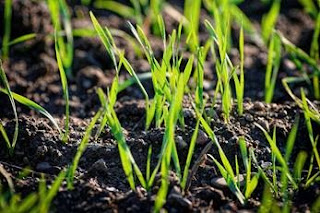Today’s Erosion and Sediment Control Tip: #12

I have heard before that if site conditions aren't perfect when seeding an area to establish a vegetative cover, that you can merely add more seed beyond the recommended seeding rate to get a better stand of vegetation? If this were true, why not plant 10 pine seedlings per square foot to establish a forest? This is silly. Seeding rates are based on research which have determined the optimal seeding rates for establishing a specific crop. When too many plants are in a confined space, the plants will thin themselves because of limited resources. There is limited soil for the plant roots, limited available water in the soil, limited nutrients in the soil, limited sunlight for photosynthesis, etc. So, don't waste money sowing more seed than recommended. It is best to make sure the grass seed has the best chance to thrive. So, make sure the soil is loose and friable (not compacted), the soil is within the right pH range, the right plant nutrients are availa...

